Imagine a battlefield scenario where a United States infantry squad is pinned down by enemy units. A couple of A-10 Warthogs quickly swoop in to provide air coverage and allow the soldiers to escape. American lives are saved, but what about the aircrew? Can they elude enemy forces and escape? A critical part of their air defenses is something known as electronic countermeasures (ECMs) or jammers. ECMs trick enemy radar, sending fake signals to confuse or deceive missile guidance systems.
Electronic countermeasures fall within the field of electronic warfare (EW), which includes techniques and technology to control the electromagnetic (EM) spectrum. Electronic warfare seeks to deny advantages to an opponent while ensuring friendly dominance in the EM spectrum. Critical aircraft defense systems use ECMs that emit electronic smoke screens to thwart radar or other detection systems, denying accurate targeting information to an enemy. Depending on the scenario, ECMs will create the illusion of multiple targets or make the real target disappear or move about randomly to protect aircraft from guided missiles. Jamming also creates radio signals to disrupt communications, creating electronic noise that degrades or denies targeting capabilities.
ABOUT THE AUTHORS
Finley Hicks (left) is a staff engineer in the Defense and Intelligence Solutions Division, assigned to SwRI’s Warner Robins office in Georgia. He is a specialist in radio frequency communications, automatic test systems and electronic warfare. Jarrett Holcomb is a research engineer also working in SwRI’s Georgia office. He develops radar processing hardware and software for RF countermeasures systems and radar electronic support receivers.
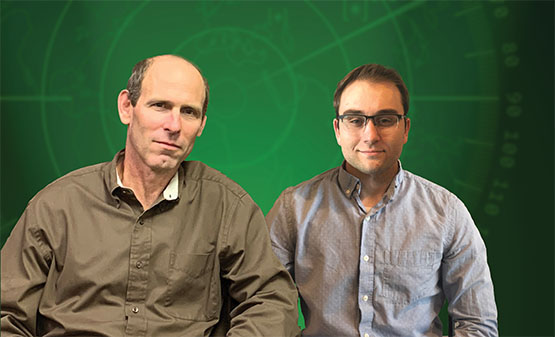
Fighter planes can be outfitted with underwing electronic attack pods, integrated systems, or can depend on standoff jammers, aircraft that patrol the air space to jam radar acquisition and tracking devices. As EW techniques become more complex, the time and cost of verifying system performance increases exponentially. The most advanced commercially available test equipment has many limitations. Additionally, advanced test equipment cannot perform automated testing for the array of complex ECM patterns that must be analyzed to validate EW system requirements.
Southwest Research Institute has developed an advanced electronic warfare measurement and analysis system to cost-effectively address these shortcomings. The System Performance and Real Time Analysis (SPARTA) software tool is designed to evaluate systems to ensure that ECM technologies send the correct countersignal for a given radar cue to help ensure aircrew survivability during operations.
SPARTA SAVES LIVES
Current EW test systems struggle to achieve absolute certainty that jammer anti-radar systems are giving the correct ECM response for any given radar stimulus. With over three decades supporting electronic attack pod systems used to counter radars, SwRI found, in one typical example, that of 61 ECM parameters, only 24 were measurable using conventional testers. The team knew it must do better — the lives of U.S. aircrews were at stake, in addition to the ground forces they support. With that in mind, SwRI leadership invested nearly $4 million in internal funding to develop SPARTA.
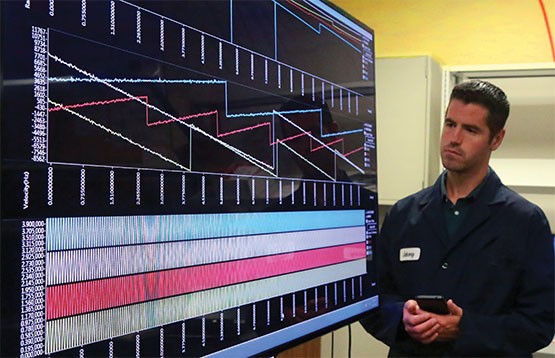
SPARTA automatically validates signal requirements for radar and electronic countermeasure systems. The system is capable of discovering possible problems in aircraft attack pods that could not be detected with previous test systems.
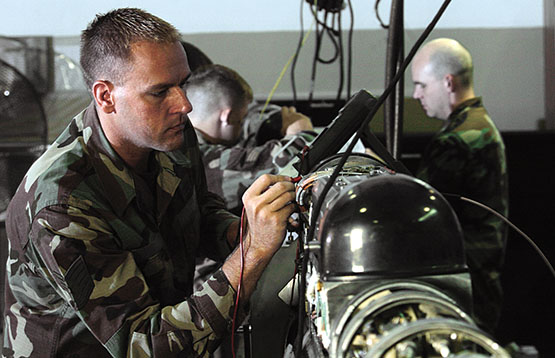
Courtesy of U.S. Air Force
The Air Force’s F-16 Fighting Falcon relies on airborne electronics countermeasure pods to defeat anti-aircraft defense systems. SPARTA helps resolve software issues associated with these pods, such as the ALQ-184 pod shown here.
SwRI developed techniques to measure every parameter — even in a highly congested and noisy electromagnetic spectrum — which is visualized and displayed via interactive videographs. SPARTA separates signal(s) of interest and multiple false targets (MFTs) in the spectrum, allowing MFTs to be analyzed together or individually. In one example, SwRI researchers demonstrated SPARTA for an Air Force customer, analyzing four complex ECM techniques to assess combined range, velocity and amplitude modulation characteristics. AF technicians measured parameters using SPARTA and then compared the results to parameters that could be measured using their existing test equipment. All parameters were accurately measured using SPARTA, while only 43% were measurable using existing test equipment.
SPARTA’s software system is hardware agnostic, allowing it to ingest radio frequency data collected by existing test equipment. The system flags out-of-limit parameters, identifying problems for engineers to resolve. In addition, SPARTA extracts, isolates and analyzes signals of interest within highly congested spectra, achieving greater than 99% pulse detection rate with better than 10 nanoseconds time accuracy.
Sparta Evolution
SPARTA represents a leap forward in ECM processing, analysis, visualization and reporting capabilities. It provides automated and manual real-time EW analysis and system requirements validation. SPARTA can be used to evaluate systems during development and acquisition and for maintenance and sustainment of existing ECM technology.
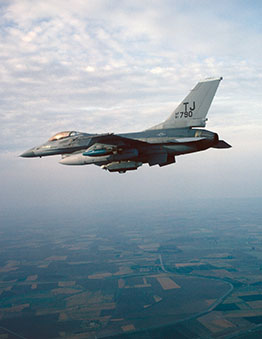
This F-16 aircraft is outfitted with an ALQ-131 electronic attack pod to provide electronic warfare protection. Institute staff members have comprehensive background and expertise in active and passive electronic warfare systems.
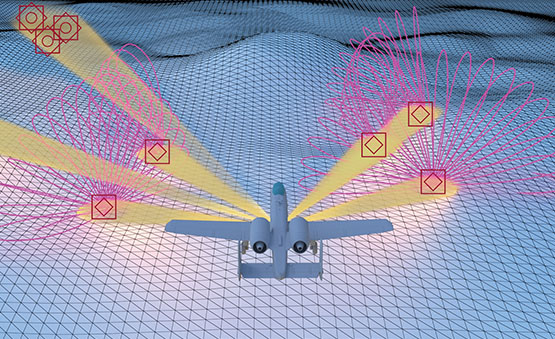
ECMs emit electronic smoke screens to impede radar and other detection systems, denying accurate targeting information to an enemy. Jamming creates radio signals to disrupt communications, creating electronic noise that degrades or denies targeting capabilities.
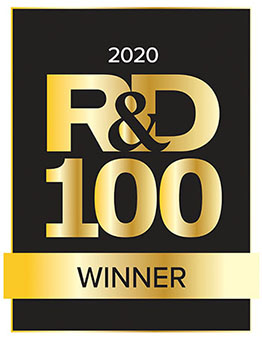
As Technology Today was going to press, the SPARTA system received a 2020 R&D 100 award. R&D World magazine recognizes the 100 most significant innovations every year with these awards
In a multiple signal environment, SPARTA parses each signal out of the spectrum and analyzes it independently. Competitive products analyze the signal train as a whole, without the capability to identify and analyze individual signals within the train. For each signal within the radio frequency (RF) spectrum, SPARTA can isolate and analyze range, velocity, amplitude modulation (AM), percent jamming and intra-pulse modulation. Competitive products are unable to provide these data from multiple signal environments.
A typical real-world EW analysis scenario contains multiple radar signals and multiple ECM false targets. SPARTA measures frequency on a pulse-by-pulse basis. Competing products, however, measure frequency on an interval basis. As a result, it is not possible to determine the frequency of individual pulses using those products.
To meet complex test needs, SPARTA has been thoroughly tested against many realistic environments, such as 50 emitters with over 1 million pulses per second within a 500 MHz span, to replicate today’s congested electromagnetic environments. A key advantage is its ability to harness “big data,” assessing large amounts of available data for relevance. The faster the information is generated, the faster it must be collected and processed. SPARTA provides the user with out-of-limit notifications, error tables and visualization presented through interactive videographs.
SPARTA measures parameters that competing products cannot while providing better visualization, allowing less experienced personnel to perform analyses. In addition, the system provides more than just an automated pass or fail of individual parameters; it also allows engineers to determine the cause of ECM failures. This allows a quick diagnosis of failures early in the acquisition or sustainment processes, saving total costs while accelerating deployment in military aircraft. SPARTA is more than just a testing tool — it also functions as a visualization platform for customized evaluations, simulation and reporting.
SPARTA’s analysis package can run on any standard personal computer with a Windows operating system. The tool ingests radar and ECM sample data and automatically extracts pulse and signal information. It then separates the signals, isolating those of interest. SPARTA is capable of either displaying these ECM patterns along with the user-defined limits or performing automated testing and providing summary information at the end of a series of tests. Other commercially available test equipment cannot extract and isolate radar and ECM signals.
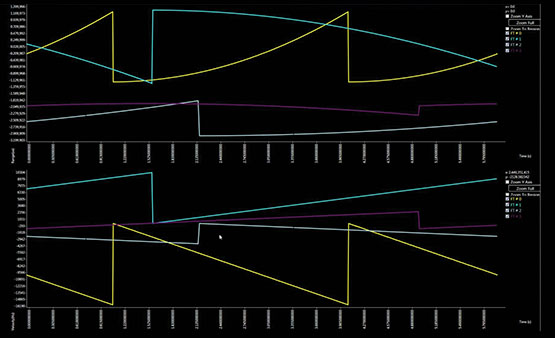
SPARTA analyzes multiple false target EW signals independently and displays them in different colors.
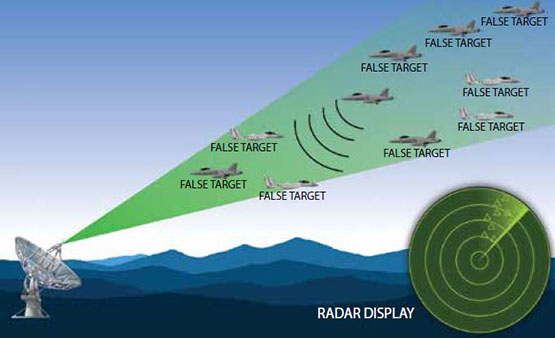
Electronic countermeasures are designed to thwart radar and other detection systems and deny accurate targeting information to an enemy. This scenario shows how EW signals can create the illusion of multiple false targets.
Current, Future Applications
SPARTA currently serves as a key evaluation tool for four different U.S. Air Force systems at four different Department of Defense locations. In addition, the Air Force is considering its use to inform the ECM acquisitions process. Jammer manufacturers also have interest in using SPARTA to speed development of their products. SwRI recently demonstrated SPARTA in a Navy facility and is discussing using the measurement capability for several advanced EW labs, chambers and test ranges.
SPARTA’s modular architecture supports expanding capabilities beyond just testing. As an example, SPARTA’s Pulse Descriptor Word (PDW) Streaming Module, which describes the characteristics of a radar signal, is currently being ported to two different multifunction AF EW systems. Because the module extracts high-fidelity pulse characteristics from complex, congested spectra so effectively, it is being integrated as an open architecture wideband receiver to perform radar warning and signals intelligence applications.
Some customers want on-site analyses in real time. SwRI is investigating moving from near real-time to real-time processing by using firmware to support the software analyses. Software processing is limited by current PC speeds. SwRI engineers are working on upgrades to decrease the processing time required for all analyses to expand it into the realm of real-time operations.
SwRI’s EW specialists are continuing to advance SPARTA technology for new applications to help protect warfighters in evolving situations.
Questions about SPARTA Electronic Warfare Advanced Test System? Contact Finley Hicks or Jarrett Holcomb or call +1 478 328 7974.

